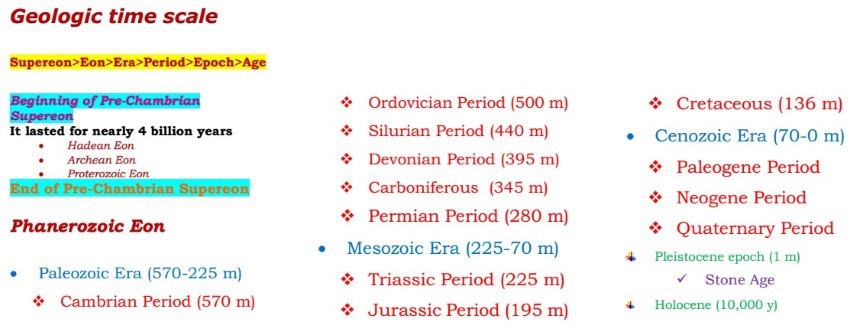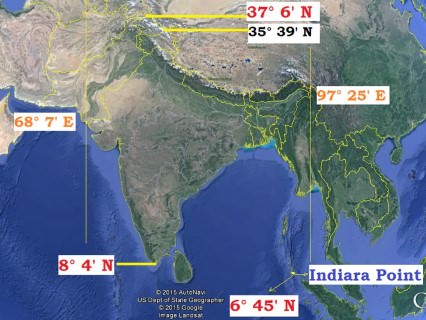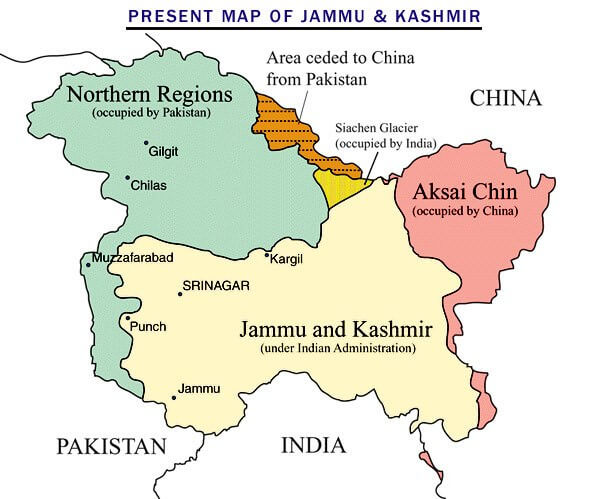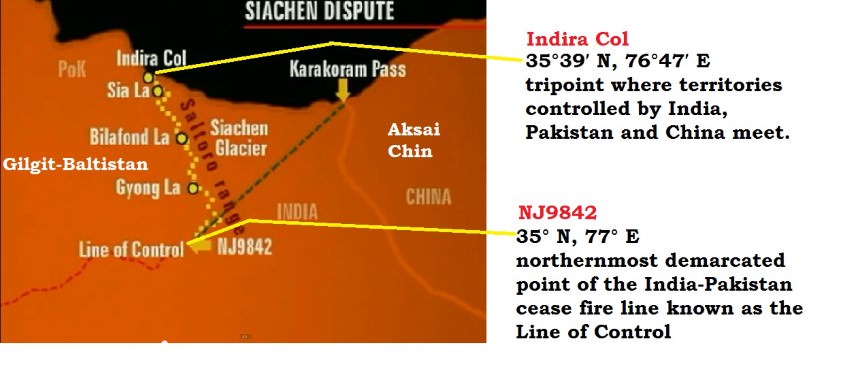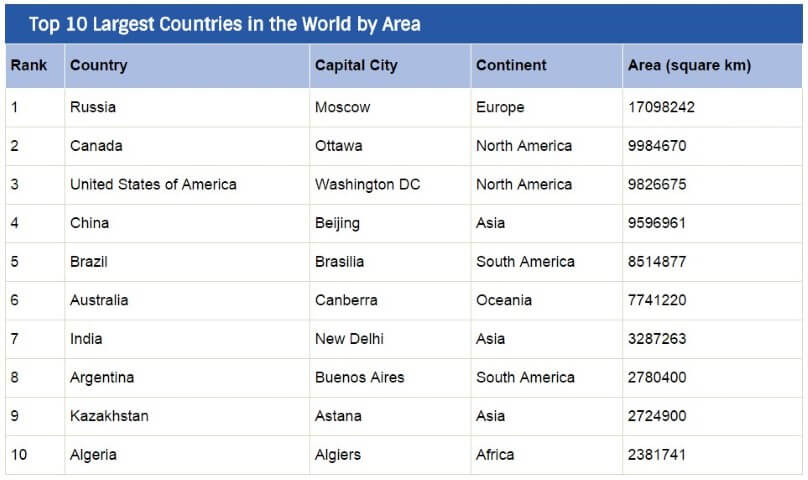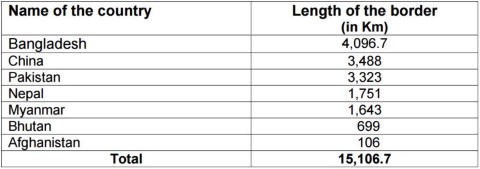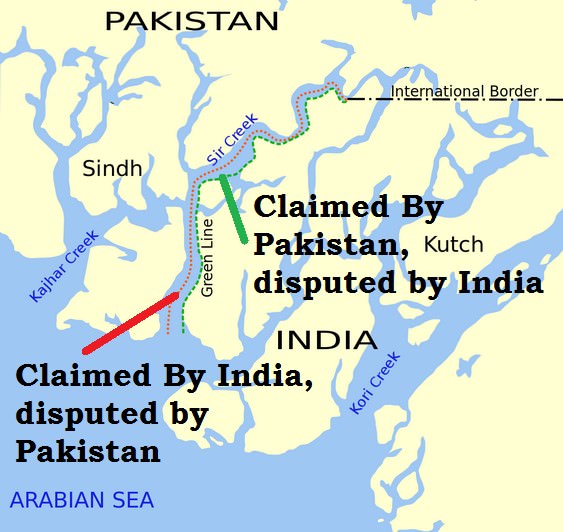Himalayan Ranges: Shiwaliks, Middle Himalayas, Greater Himalayas, Trans-Himalayas & Purvanchal
Table of Contents
Major Physical Divisions of India
- The Himalayas (young fold mountains),
- Indo-Gangetic Plain (monotonous topography – featureless topography),
- The Peninsular Plateau (one of the most stable landmasses; one of the oldest plateaus of the world),
- Coastal Plains (Sediments due to fluvial action).
- The Indian Islands [Coral Islands == coral reef built up on atolls – Lakshadweep. Tectonic == Andaman and Nicobar Islands – Interaction between Indian Plate and Eurasian plate] and
Peninsular Plateau
- Includes the entire south India, central India, Aravalis, Rajmahal hills, Meghalaya plateau, Kuchchh-Kathiawar region (Gujarat) etc..
- It is the oldest and the most stable landmass of India.
Himalayas
- Includes the Himalayas, Purvanchal and their extensions Arakan Yoma (Myanmar) and Andaman and Nicobar Islands (but we will consider these as islands only).
- It is the youngest and highly unstable landmass of India. [Continent – Continent Convergence]
- Tectonic movements are very common.
Indo-Gangetic Plain
- Between Peninsular and Himalayan region.
- Most youthful, monotonous [lack of change or variety] region prone to tectonic forces.
Coastal Plains
- Eastern Coastal Plains and Western Coastal Plains.
- Formed due to consolidation of sediments brought by rivers (fluvial deposits).
- Highly stable just like peninsular plateau.
Indian Islands
- Two major groups – Lakshadweep and, Andaman and Nicobar islands.
- Lakshadweep [Hotspot] are group of atolls occupied by coral reefs. No significant volcanism or tectonic activity in recent past. Highly vulnerable to sea-level rise.
- Andaman and Nicobar islands – Continuation of Arakan Yoma. Has active volcanoes and is tectonically active.
Type of Topography | Extent in % |
| Mountainous (more than 2135 m above sea level) | 10.7 |
| Hilly area (305 – 2135 m above sea level) | 18.6 |
| Plateau (305 – 915 m above sea level) | 27.7 |
| Plains | 43 |
Division of the Himalayas
Formation of Himalayas explained in Continent – Continent Convergence.
- Shiwaliks or outer Himalayas
- Lesser or Middle Himalayas
- The Greater Himalayas
- The Trans-Himalayas – Tibetan Himalayas.
- The Eastern Hills – Purvanchal: A chain of hills in North-East India.
Himalayan Ranges
- Series of several parallel or converging ranges.
- The ranges are separated by deep valleys creating a highly dissected topography [(of a plateau or upland) divided by a number of deep valleys].
- The southern slopes have steep gradients and northern slopes have comparatively gentler slopes. [Scaling Mount Everest is less hectic from the northern side. But China puts restrictions so climbers take the steeper southern slopes from Nepal]
- Most of the Himalayan ranges fall in India, Nepal and Bhutan. The northern slopes are partly situated in Tibet (trans-Himalayas) while the western extremity lies in Pakistan, Afghanistan and Central Asia.
- Himalayas between Tibet and Ganga Plain is a succession of three parallel ranges.
Shiwalik Range
- Also known as Outer Himalayas.
- Located in between the Great Plains and Lesser Himalayas.
- The altitude varies from 600 to 1500 metres.
- Runs for a distance of 2,400 km from the Potwar Plateau to the Brahmaputra valley.
- The southern slopes are steep while the northern slopes are gentle.
- The width of the Shiwaliks varies from 50 km in Himachal Pradesh to less than 15 km in Arunachal Pradesh.
- They are almost unbroken chain of low hills except for a gap of 80-90 km which is occupied by the valley of the Tista River and Raidak River.
- Shiwalik range from North-East India up to Nepal are covered with thick forests but the forest cover decreases towards west from Nepal (The quantum of rainfall decreases from east to west in Shiwaliks and Ganga Plains).
- The southern slopes of Shiwalik range in Punjab and Himachal Pradesh are almost devoid of forest cover. These slopes are highly dissected by seasonal streams called Chos.
- Valleys are part of synclines and hills are part of anticlines or antisynclines.
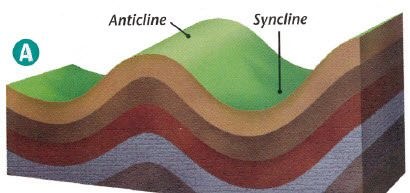
Formation (Formation of Himalayas already explained)
- Shiwaliks were formed last of all the ranges (2-20 million years ago).
- The Shiwaliks are consolidated sands, gravels and conglomerate deposits [Alluvial fans] which were brought by the rivers flowing from the higher ranges.
- These deposits were folded and hardened due to compression offered by the northward movement of Indian plate.
The Shiwaliks are known by different names in different areas
Region | Name of Shiwaliks |
| Jammu Region | Jammu Hills |
| Dafla, Miri, Abor and Mishmi Hills | Arunachal Pradesh |
| The Dhang Range, Dundwa Range | Uttarakhand |
| Churia Ghat Hills | Nepal |
Explain the formation of Duns (Duras)
- Shiwalik Hills were formed by the accumulation of conglomerates (sand, stone, silt, gravel, debris etc.).
- These conglomerates, in the initial stages of deposition, obstructed the courses of the rivers draining from the higher reaches of the Himalayas and formed temporary lakes.
- With passage of time, these temporary lakes accumulated more and more conglomerates. The conglomerates were well settled at the bottom of the lakes.
- When the rivers were able to cut their courses through the lakes filled with conglomerate deposits, the lakes were drained away leaving behind plains called ‘duns’ or ‘doons’ in the west and ‘duars’ in the east.
- Dehra Dun in Uttarakhand is the best example [75 km long and 15-20 km wide]
- Kotah, Patli Kothri, Chumbi, Kyarda, Chaukhamba, Udhampur and Kotli are other important duns.
Middle or the Lesser Himalaya
- In between the Shiwaliks in the south and the Greater Himalayas in the north.
- Runs almost parallel to both the ranges.
- It is also called the Himachal or Lower Himalaya.
- Lower Himalayan ranges are 60-80 km wide and about 2400 km in length.
- Elevations vary from 3,500 to 4,500 m above sea level.
- Many peaks are more than 5,050 m above sea level and are snow covered throughout the year.
- Lower Himalayas have steep, bare southern slopes [steep slopes prevents soil formation] and more gentle, forest covered northern slopes.
- In Uttarakhand, the Middle Himalayas are marked by the Mussoorie and the Nag Tibba ranges.
- The Mahabharat Lekh, in southern Nepal is a continuation of the Mussoorie Range
- East of the Kosi River, the Sapt Kosi, Sikkim, Bhutan, Miri, Abor and Mishmi hills represent the lower Himalayas.
- The Middle Himalayan ranges are more friendly to human contact.
Majority of the Himalayan hill resorts like Shimla, Mussoorie, Ranikhet, Nainital, Almora and Darjeeling, etc. are located here.
Important ranges of Lesser Himalayas | Region |
| The Pir Panjal Range | Jammu and Kashmir (They are to the south of Kashmir Valley) |
| The Dhaola Dhar Range | Himachal Pradesh |
| The Mussoorie Range and The Nag Tiba Range | Uttarakhand |
| Mahabharat Lekh | Nepal |
The Pir Panjal range
- The Pir Panjal range in Kashmir is the longest and the most important range.
- It extends from the Jhelum river to the upper Beas river for over 300 km.
- It rises to 5,000 metres and contains mostly volcanic rocks.
Passes in Pir Panjal
- Pir Panjal Pass (3,480 m), the Bidil (4,270 m), Golabghar Pass (3,812 m) and Banihal Pass (2,835 m).
- The Banihal Pass is used by the Jammu-Srinagar highway and Jammu-Baramula railway.
- The Kishanganga, the Jhelum and the Chenab cut through the range.
- Southeast of the Ravi, the Pir Panjal continues as Dhaola Dhar range, passing through Dalhousie, Dharmshala, and Shimla.
Important Valleys
- Between the Pir Panjal and the Zaskar Range of the main Himalayas, lies the valley of Kashmir. (average elevation is 1,585 m above mean sea level)
- The synclinal basin of the valley is floored with alluvial, lacustrine [lake deposits], fluvial [river action] and glacial deposits. {Fluvial Landforms, Glacial Landforms}
- Jehlum River meanders through these deposits and cuts a deep gorge in Pir Panjal through which it drains. (Kashmir is like a basin with very few outlets)
- In Himachal Pradesh there is Kangra Valley. It is a strike valley and extends from the foot of the Dhaola Dhar Range to the south of Beas.
- On the other hand, the Kulu Valley in the upper course of the Ravi is transverse valley.
Strike valley vs. Transverse valley
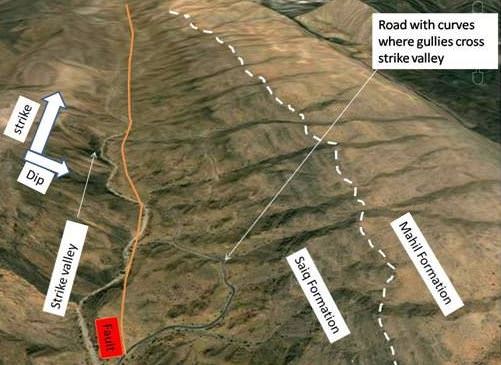 |
The Great Himalaya
- Also known as Inner Himalaya, Central Himalaya or Himadri.
- Average elevation of 6,100 m above sea level and an average width of about 25 km.
- It is mainly formed of the central crystallines (granites and gneisses) overlain by metamorphosed sediments [limestone]. {Rock System}
- The folds in this range are asymmetrical with steep south slope and gentle north slope giving ‘hog back (a long, steep hill or mountain ridge)’ topography.
- This mountain arc convexes to the south just like the other two.
- Terminates abruptly at the syntaxial bends. One in the Nanga Parbat in north-west and the other in the Namcha Barwa in the north-east.
- This mountain range boasts of the tallest peaks of the world, most of which remain under perpetual snow.
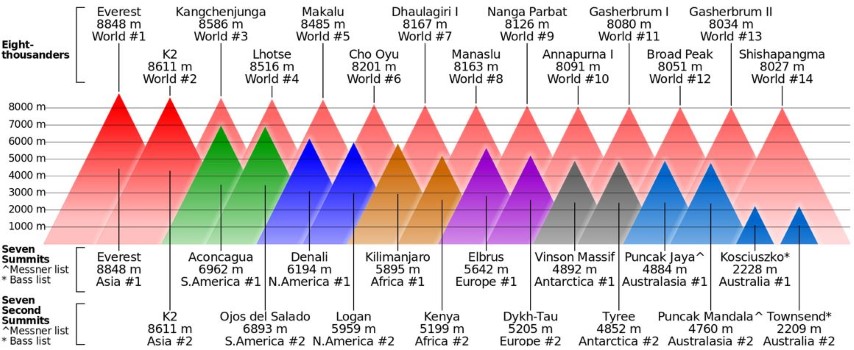
Regional name of Mount Everest | Region |
| Sagarmatha (The Goddess of the Sky) | Nepal |
| Chomlungma (Mother of the World) | China (Tibet) |
- Mount Everest was first located by George Everest, the then Surveyor General of India in 1841 and in 1852 it was established as the highest peak of the world by the Great Trigonometrical Survey of India.
Passes in the Greater Himalayas
- The passes because they are generally higher than 4,570 m above sea level and are snowbound for most of the year.
State | Passes of Greater Himalayas |
| Jammu and Kashmir |
|
| Himachal Pradesh |
|
| Uttarakhand |
|
| Sikkim |
|
The Trans Himalayas
- The Himalayan ranges immediately north of the Great Himalayan range.
- Also called the Tibetan Himalaya because most of it lies in Tibet.
- The Zaskar, the Ladakh, the Kailas and the Karakoram are the main ranges.
- It stretches for a distance of about 1,000 km in east-west direction.
- Average elevation is 3000 m above mean sea level.
- The average width of this region is 40 km at the extremities and about 225 km in the central part.
- The Nanga Parbat (8126 m) is an important range which is in The Zaskar Range.
- North of the Zaskar Range and running parallel to it is the Ladakh Range. Only a few peaks of this range attain heights of over 6000 metres.
- The Kailas Range (Gangdise in Chinese) in western Tibet is an offshoot of the Ladakh Range. The highest peak is Mount Kailas (6714 m). River Indus originates from the northern slopes of the Kailas range.
- The northern most range of the Trans-Himalayan Ranges in India is the Great Karakoram Range also known as the Krishnagiri range.
- Karakoram Range extends eastwards from the Pamir for about 800 km. It is a range with lofty peaks [elevation 5,500 m and above]. It is the abode of some of the greatest glaciers of the world outside the polar regions.
- Some of the peaks are more than 8,000 metre above sea level. K2 (8,611 m)[Godwin Austen or Qogir] is the second highest peak in the world and the highest peak in the Indian Union.
- The Ladakh Plateau lies to the north-east of the Karakoram Range. It has been dissected into a number of plains and mountains [Soda Plains, Aksai Chin, Lingzi Tang, Depsang Plains and Chang Chenmo]
Purvanchal or Eastern Hills
- Eastern Hills or The Purvanchal are the southward extension of Himalayas running along the north-eastern edge of India.
- At the Dihang gorge, the Himalayas take a sudden southward bend and form a series of comparatively low hills which are collectively called as the Purvanchal.
- Purvanchal hills are convex to the west.
- They run along the India-Myanmar Border extending from Arunachal Pradesh in the north to Mizoram in the south.
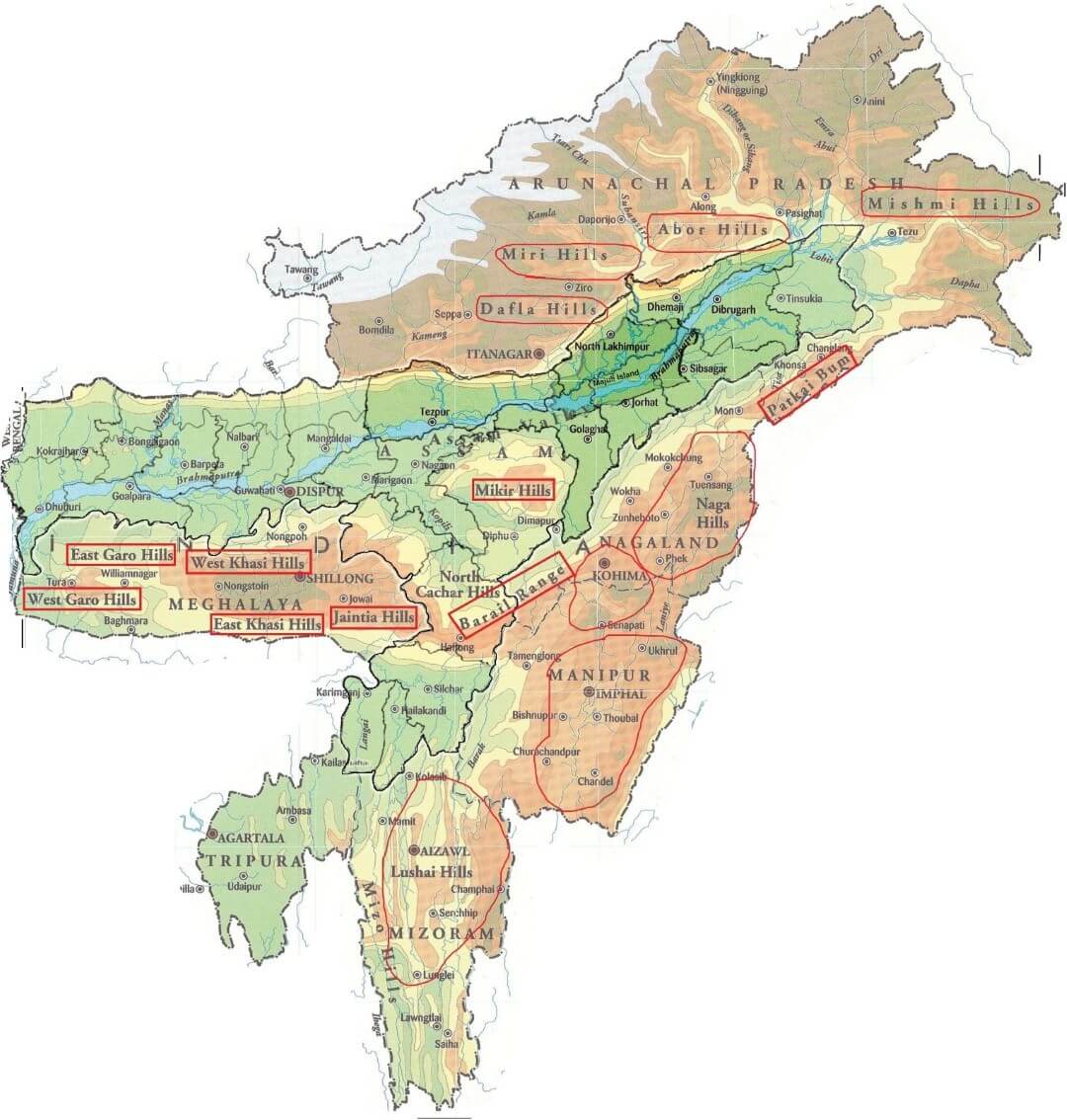
- Patkai Bum hills are made up of strong sandstone; elevation varying from 2,000 m to 3,000 m; merges into Naga Hills where Saramati (3,826 m) is the highest peak.
- Patkai Bum and Naga Hills form the watershed between India and Myanmar.
- South of Naga Hills are the Manipur hills which are generally less than 2,500 metres in elevation.
- The Barail range separates Naga Hills from Manipur Hills.
- Further south the Barail Range swings to west into Jaintia, Khasi and Garo hills which are an eastward continuation of the Indian peninsular block. They are separated from the main block by Ganga and Brahmaputra rivers.
- South of the Manipur Hills are the Mizo Hills (previously known as the Lushai hills) which have an elevation of less than 1,500 metres. The highest point is the Blue Mountain (2,157 m) in the south.
Syntaxial Bends of the Himalayas
- Himalayas extend in the east-west direction from the Indus gorge in the west to the Brahmaputra gorge in the east.
- Himalayan ranges take sharp southward bends at these gorges. These bends are called syntaxial bends of the Himalayas.
- The western syntaxial bend occurs near the Nanga Parbat where the Indus river has cut a deep gorge.
- The eastern syntaxial bend occurs near the Namche Barwa
.


